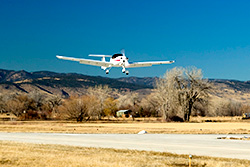 AOPA and the Recreational Aviation Foundation (RAF) are weighing in on a U.S. Department of Agriculture Forest Service initiative to create a new planning rule that would include restoring forests, protecting watersheds, addressing climate change, and more. The two general aviation associations want to ensure that backcountry airstrips are considered and protected and that aviation stakeholders are a part of the planning process.
AOPA and the Recreational Aviation Foundation (RAF) are weighing in on a U.S. Department of Agriculture Forest Service initiative to create a new planning rule that would include restoring forests, protecting watersheds, addressing climate change, and more. The two general aviation associations want to ensure that backcountry airstrips are considered and protected and that aviation stakeholders are a part of the planning process.
“Our system of national forests and grasslands is one of America’s great natural treasures, and we appreciate efforts to protect those ecosystems today and for future generations,” AOPA Vice President of Airports and State Advocacy Greg Pecoraro wrote in formal comments to the Forest Service. He later pointed out that “these backcountry airstrips play an important role in the ability of the Forest Service to fulfill its mission to ‘sustain the health, diversity, and productivity’ of the nation’s forests and grasslands.”
The Forest Service, which is responsible for managing 193 million acres of national forests and grasslands and working with state and local agents to protect 500 million acres of non-federal rural and urban forests, will be conducting an environmental impact statement to fully understand the impact a new planning rule for land management would have on the national forests and grasslands.
“Airstrips are an appropriate use of National Forest System lands as they provide enhanced access for a variety of legitimate recreational activities,” RAF President John J. McKenna Jr. reminded the Forest Service.
AOPA and the RAF pointed out that backcountry strips provide access to the land for recreational purposes like hiking, camping, fishing, and hunting, but also for firefighting, forest management, scientific study, emergency services, and search and rescue. Both groups pledged to work with the Forest Service to ensure aviation’s needs are met.


